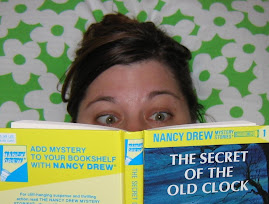Bibliographic Data
Willems, Mo. 2003. Don’t Let the Pigeon Drive the Bus. New York: Hyperion Books for Children. ISBN: 078681988X
Summary
When the bus driver takes a break, he asks the reader to keep an eye on things – and “don’t let the pigeon drive the bus!” The pigeon begs, bribes, tricks, and even throws a fit, trying everything he can think of to convince the reader to let him drive the bus. He’s dejected when he realizes the bus driver has returned and he’s lost his chance, until he turns and sees a big truck. A new dream is born!
Critical Analysis
The reader is immediately drawn into the book by the bus driver, and remains involved because the pigeon continues to address him directly throughout the book. The pigeon is very childlike, saying things such as, “No fair!”, which amuses both children and adults. Although we are used to seeing farfetched occurrences like animals driving cars in children’s literature, the device of bringing the reader into the text seems to also bring in a dose of reality, and highlights the silliness of the notion that a pigeon should expect to drive a bus. The dialogue is realistic enough, however, to allow us to suspend disbelief long enough to have this conversation. Parents and children alike are sure to recognize some of the words and behavior the pigeon uses to get his way.
Though Willems’ drawings are simple, he conveys the pigeon’s emotions well, primarily through changes in body language, but also by positioning and size. Willems’ illustrations also set the speed of the story, slowing down with negative space, and speeding up with multiple illustrations on a double-page spread. Because the entire book is in dialogue, this story begs to be read aloud, and Willems’ gives us clues on how to read the text, sometimes using bold print, other times using a wiggly line on the conversation bubble, or making the bubble very small. When the pigeon throws a temper tantrum, it’s obvious, from the feathers flying across the page, the way he throws himself around, his red, beady eye, and the very large, messy, yellow and black upper-case printing.
My youngest daughter and I first read this book four years ago, when it was published. She was four at the time, and we both laughed hard and thoroughly enjoyed this silly book. She recently read it again, as I was preparing for this review, and couldn’t resist reading it aloud, still laughing along the way.
Reviews
From Publishers Weekly:
“The premise of this cheeky debut is charmingly absurd. … Readers will likely find satisfaction in this whimsical show of emotions and, perhaps, a bit of self-recognition.” Copyright 2003 Reed Business Information, Inc.
From Booklist, 9/1/2003
"In his winning debut, Willems finds the preschooler in a pigeon: a cajoling, tantrum-throwing, irresistible bird. … Willems is a professional animator, and each page has the feel of a perfectly frozen frame of cartoon footage--action, remarkable expression, and wild humor captured with just a few lines. Preschoolers will howl over the pigeon's dramatics, even as they recognize that he wheedles, blows up, and yearns to be powerful just like they do.” - GillianEngberg, Copyright © American Library Association
Connections
This is such a fun book to read aloud, so I would highly recommend it when teaching students to read with emotion, or to use for fluency.
The pigeon’s behavior gives the teacher a springboard for discussing wants and needs or appropriate behavior. Should the pigeon be allowed to drive the bus? Why or why not? Did the pigeon act appropriately?
**********
Reviews found at the Carrollton Public Library website, http://cityofcarrollton.com/library/


No comments:
Post a Comment